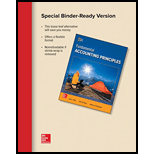
(1)
Ratio Analysis:
• Ratio analysis is a study of several key metrics of a company based on the data presented in its’ financial statements with an objective to evaluate the financial health of a company.
• It is essential for investors, stakeholders, government bodies etc. to evaluate the key metrics of an entity in order to ensure that the company fulfills the going concern principle and displays financial stability.
The key metrics mentioned above include the following:
• Cost of Goods sold to Total Expenses – It is a measure of the relation between the cost of goods sold in relation to the total expenses of the reporting period which include both direct and indirect costs of manufacture.
• It seeks to measure the relation of the selling and distribution expenses in relation to the total costs and a high ratio can indicate that the company is not spending enough on the Selling and Distribution expenses and vice versa.
Cost of Goods Sold to Total Expenses = Cost of Goods Sold / Total Expenses × 100
where,
Total expenses = Sum total of Direct and Indirect Expenses
Cost of Goods sold to Total Expenses for Samsung for the recent 2 years.
(2)
Ratio Analysis:
• Ratio analysis is a study of several key metrics of a company based on the data presented in its’ financial statements with an objective to evaluate the financial health of a company.
• It is essential for investors, stakeholders, government bodies etc. to evaluate the key metrics of an entity in order to ensure that the company fulfills the going concern principle and displays financial stability.
The key metrics mentioned above include the following:
• Cost of Goods sold to Total Expenses – It is a measure of the relation between the cost of goods sold in relation to the total expenses of the reporting period which include both direct and indirect costs of manufacture.
• It seeks to measure the relation of the selling and distribution expenses in relation to the total costs and a high ratio can indicate that the company is not spending enough on the Selling and Distribution expenses and vice versa.
Cost of Goods Sold to Total Expenses = Cost of Goods Sold / Total Expenses × 100
where,
Cost of Goods Sold to Total Expenses = Cost of Goods Sold / Total Expenses × 100
where,
Total expenses = Sum total of Direct and Indirect Expenses
Want to see the full answer?
Check out a sample textbook solution
Chapter 20 Solutions
Loose Leaf for Fundamental Accounting Principles
- I want to this question answer for General accounting question not need ai solutionarrow_forwardLinton Corp. recently reported an EBITDA of $18.2 million and net income of $3.5 million. It also had interest expense of $2.7 million, and its corporate tax rate is 25%. What was Linton's depreciation and amortization expense?arrow_forwardCan you help me solve this general accounting problem with the correct methodology?arrow_forward
- At September 1, 2010, Kern Enterprises reported a cash balance of $45,000. During the month, Kern collected cash of $15,000 and made disbursements of $25,000. At September 31, 2010, what is the cash balance? A. $25,000 credit B. $35,000 credit C. $60,000 debit D. $35,000 debitarrow_forwardHi expert please given correct answer with general accounting questionarrow_forwardThe total estimated cost for materials and labor are $1,512,000 and $1,984,000, respectively.arrow_forward
- Please provide the solution to this financial accounting question with accurate financial calculations.arrow_forwardWhich approach governs mutual company demutualization accounting? (a) Record at par value (b) Net asset value per share (c) Original membership cost (d) Market value on conversion date MCQarrow_forwardCan you explain this general accounting question using accurate calculation methods?arrow_forward

 AccountingAccountingISBN:9781337272094Author:WARREN, Carl S., Reeve, James M., Duchac, Jonathan E.Publisher:Cengage Learning,
AccountingAccountingISBN:9781337272094Author:WARREN, Carl S., Reeve, James M., Duchac, Jonathan E.Publisher:Cengage Learning, Accounting Information SystemsAccountingISBN:9781337619202Author:Hall, James A.Publisher:Cengage Learning,
Accounting Information SystemsAccountingISBN:9781337619202Author:Hall, James A.Publisher:Cengage Learning, Horngren's Cost Accounting: A Managerial Emphasis...AccountingISBN:9780134475585Author:Srikant M. Datar, Madhav V. RajanPublisher:PEARSON
Horngren's Cost Accounting: A Managerial Emphasis...AccountingISBN:9780134475585Author:Srikant M. Datar, Madhav V. RajanPublisher:PEARSON Intermediate AccountingAccountingISBN:9781259722660Author:J. David Spiceland, Mark W. Nelson, Wayne M ThomasPublisher:McGraw-Hill Education
Intermediate AccountingAccountingISBN:9781259722660Author:J. David Spiceland, Mark W. Nelson, Wayne M ThomasPublisher:McGraw-Hill Education Financial and Managerial AccountingAccountingISBN:9781259726705Author:John J Wild, Ken W. Shaw, Barbara Chiappetta Fundamental Accounting PrinciplesPublisher:McGraw-Hill Education
Financial and Managerial AccountingAccountingISBN:9781259726705Author:John J Wild, Ken W. Shaw, Barbara Chiappetta Fundamental Accounting PrinciplesPublisher:McGraw-Hill Education





